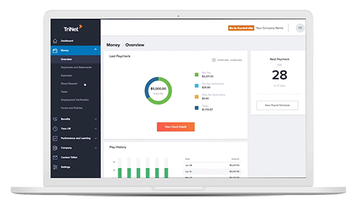6 Concepts to Guide Your Strategic HR Plan

Table of contents
- 1.Concepts to Leverage Comprehensive HR Plans
A successful business demands motivation, dedication and a clearly defined plan. Without an effective business plan in place, translating your mission into a measurable goal can challenge even the most dedicated team. Successful companies begin their strategic planning with detailed summaries that incorporate core business objectives, products and services, marketing strategies, financial planning, and measurements to evaluate success. While creating a business plan is an essential part of launching your organization, it can only be effective if aligned with your human resources strategy.
The human resources department is a powerhouse of an organization. This team helps to maximize employee productivity, employee experience and ongoing engagement levels while mitigating risk and protecting the organization from compliance concerns. HR responsibilities span from talent acquisition and onboarding to compensation, access to benefits, talent management, DEI issues and succession planning. They include consulting, skill development and a degree of expertise that will help you get the most out of your business plans.
While many larger organizations have internal teams to handle their HR needs, small to medium-size businesses don’t always have the resources to employ a full team of HR experts. Teaming upwith a professional employer organization (PEO) leverages the collective strength of thousands of SMBs to deliver access to premium-level HR benefits, consultants and strategies. As your business continues to evolve, make sure you’re staying up to date with HR best practices to fuel your progression. By creating a strategic HR plan and leveraging a professional for implementation and support, you’ll get the most out of your efforts and increase the likelihood of hitting short and long-term goals.
Concepts to Leverage Comprehensive HR Plans
When planning for ongoing success, businesses need to be prepared to handle future situations and plan for the unexpected. This allows employers to strengthen their current workforce and create actionable plans with an HR strategy that will have the greatest impact on organizational success. In order to create a strategic HR plan that continues to support the future of your business, consider these six key concepts.
1. The Feel of Your Office
While the pandemic has brought workplace safety to the forefront with mask requirements, barriers and social distancing, it’s now even more important to consider how your employees view your overall workplace. Consider how the space looks and feels to the people who navigate it each day. In the past, you may have had a very strong workforce present, but with changes caused by the pandemic, more employees are working remotely.
Your strategic planning should address the balance between your past workplace and your future goals, since your employees have likely changed the way they interact with each other and clients. Consider how these changing connections will continue to develop as time moves forward. Are there any plans for updating worksites to accommodate the differences? Are your competitors dealing with similar changes and, if so, how are they handling the situation? You’ll need to ensure that your employees continue to be comfortable in their work environment.
2. Overall Workplace Culture
Take a good look at your current workplace culture. The feel of your office could be a factor, but you should also consider whether your overall corporate values are changing. Organizational culture can be dynamic and tends to develop as your business progresses. To take a proactive approach and shape your company culture in a positive manner, it’s essential that you team up with HR experts to better understand communication methods and how to strengthen overall employee experience within your company.
Consider what employees find valuable about your organization. You may want to incorporate engagement surveys, pulse checks or other interactions to identify areas of strength as well as opportunities for updates. Mentorship and sponsorship programs can also enhance engagement and give additional opportunities for connection outside of an employee’s immediate work group.
One thing to incorporate into your ongoing HR plan is how to improve talent acquisition, hiring and onboarding while integrating company culture. It’s important for new hires to begin with a strong understanding of how your organization functions, what to expect with training and the scope of benefits that will be available. By communicating these items clearly, you’ll create a stronger workforce that’s committed to your ongoing success.
3. Changes to Employment Requirements
There are many different laws and regulations that govern the employer-employee relationship. Not only is it critical to stay informed and up to date about these requirements, but you should also develop strategic plans for how to adhere to any necessary changes without disrupting your workforce. For example, the COVID-19 pandemic created short-term and long-term changes to employment laws. These changes affected various standards including those required under the Occupational Safety and Health Act (OSHA). As the situation evolves, employment laws and requirements continue to be added and updated by states and local government entities.
Understanding these kinds of changes to employment laws and regulations is important for your business’ ongoing strategic plan. When changes occur, providing your workforce with prompt necessary updates and streamlined processes will help reduce the risk of compliance related issues. It also provides your team with more time to understand the new policies or procedures and how the changes affect them. For stronger employee integration, work with your leadership to discuss different ways to improve communication regarding these updates.
4. People Analytics
The role of HR experts has expanded to include a concept called people analytics. This has become an increasingly important factor in relation to HR analytics. People analytics describes the practice of collecting data from HR teams and comparing it to organizational data in an effort to create actionable ways to improve your business model. It allows you to better understand your employees and how their skills relate to your organizational goals. People analytics can provide insight into areas like employee turnover, retention and attrition.
When analyzing these factors, collect data regarding your current employee experience. This should include retention rates and any information regarding turnover. You should also consider analyzing performance reviews and employee productivity to better understand how the individuals in your organization function. It’s important to view this data from an objective perspective so you can effectively incorporate it into your long-term strategic HR plan.
5. Ongoing Institutional Knowledge
Institutional knowledge drain refers to situations where organizations lose employees at a faster rate than they are hiring new talent. This creates a knowledge gap and a learning curve for the organization as a whole. When seasoned employees leave before you have the time to train new hires accordingly, you can experience diminished productivity rates and increases in the time it takes to reach your goals. This can also result if there is significant turnover within your organization due to an increasing desire for remote work or better benefits offered by your competitors.
Try to be proactive about maintaining ongoing institutional knowledge. You should develop a succession plan within your leadership and essential employees to clearly identify successors and better prepare for the transition. Another way to strengthen transitional periods is to create strong internal processes to help cross-train and capture your current institutional knowledge and provide ongoing opportunities for professional development.
6. Employee Experience and Feedback
Employee experience is the driving force behind productivity and high retention rates. Make sure you’re communicating with your employees and expressing interest in their opinions and recommendations. When employees understand how their efforts play a part in the organization, they feel valued by their leaders. And when employees feel valued, they perform better and are more productive. By soliciting feedback using surveys or focus groups, you’ll get a stronger understanding of how everyone views their role and be able to prioritize potential concerns. When you combine this feedback with measurable analytics, you’ll be able to use the data as a strategic tool in creating a successful long-term HR plan.
HR is a dynamic function that plays an integral role in the success of an organization. As an SMB, it’s important to provide access to a strong benefits package and curate a strategic HR plan that aligns with your goals. To help you with this process, TriNet offers human capital consulting solutions to support your toughest HR needs and help you push your business to the next level. By combining expert guidance, risk mitigation strategies, and headache-free payroll processing, you’ll gain an HR team committed to your growth and peace of mind. Separate from our existing PEO structure, we now offer TriNet Zenefits, an enhanced human capital management (HCM) software product, that expands the TriNet solution for SMBs. Contact us today to learn more about how we can help you strengthen your strategic plans and support your growth.

TriNet Team
Table of contents
- 1.Concepts to Leverage Comprehensive HR Plans





